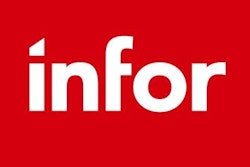Initiative will provide freight forwarders and NVOCCs with electronic filing service with ship lines, U.S. and Canadian Customs
Alameda, CA, and Silver Spring, MD — May 4, 2005 — GT Nexus and Flagship Customs Services announced an agreement to integrate their respective platforms, launching a range of automated, electronic shipment document and regulatory filing services for the global trade industry.
Flagship operates a certified U.S. Customs Service Center with over 600 non-vessel operating common carriers (NVOCCs) and freight forwarders, using the system to file import and export trade data with U.S. and Canadian Customs. GT Nexus is a provider of hosted software and services for global logistics management and operates the GTN Portal, a Web platform for ocean transportation with over 15,000 registered users.
The initiative will create a single-source offering that can be utilized by global trade participants as an on-demand service. The program allows freight forwarders, NVOCCs and ocean carriers to simultaneously automate the transmission of AMS (automated manifest system) and ACI (advanced commercial information) filings, respectively to U.S. and Canadian Customs, and the bill of lading transaction with the shipping line.
By combining their services, the two companies said they are focusing on a global trade problem where business and regulatory processes have been inefficiently managed as separate work streams. The typical two-step process today:
Business transaction: Freight forwarders and NVOCCs book their freight and then submit bill of lading instructions to the ocean carrier with all the shipment details. Using the GTN Portal as a common transaction platform, the information moves electronically into the back-office systems of the vessel operators, from which the vessel operator creates the bill of lading document.
Regulatory filing: The forwarder or NVOCC prepares a house bill of lading with the detailed cargo information to meet regulatory filing requirements for import shipments. This is submitted through the Flagship Service Center, where it is received electronically by the required Customs system in the United States or Canada.
With the new Flagship/GT Nexus offering, a single transaction initiated by a customer in either system can be used to accomplish both business and regulatory tasks with no re-keying of data.
For example, the companies said, a freight forwarder or NVOCC using the GTN Portal to book cargo and submit bill of lading instructions electronically with ocean carriers, will be able to automatically generate the necessary regulatory filing (house bill of lading) and submit it to Customs AMS or ACI, through the integration with Flagship's Import2000 service.
Freight forwarders or NVOCCs using Flagship's Import2000 service to submit their regulatory filings (house bill of lading) to Customs AMS or ACI will be able to automatically generate and send an electronic bill of lading instruction to the ocean carrier, through the integration with the GTN Portal.
In both examples, the activities are performed as a single operation, using common data entered once into the originating system.
Robert Foley, president of Flagship, commented, We use the connectivity of our two networks to connect shippers, intermediaries and ocean carriers with regulatory agencies in ways that will drive new and lasting benefits to every constituent.
Foley said Flagship also operates AESDirect, the U.S. Census Bureau's online service for electronic filing of shipper's export declarations, which has over 30,000 registered companies.










